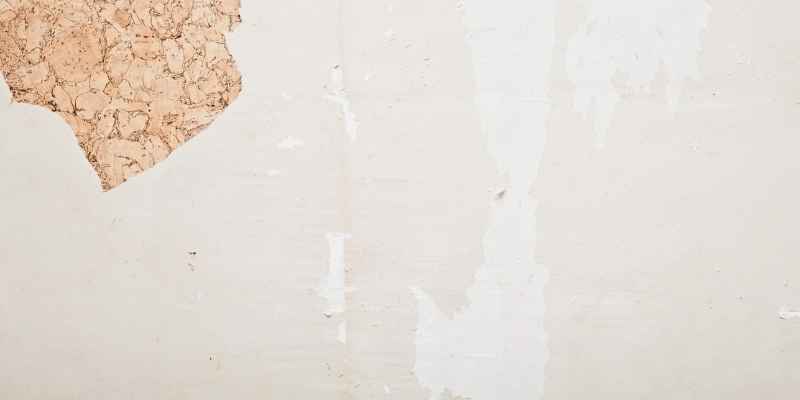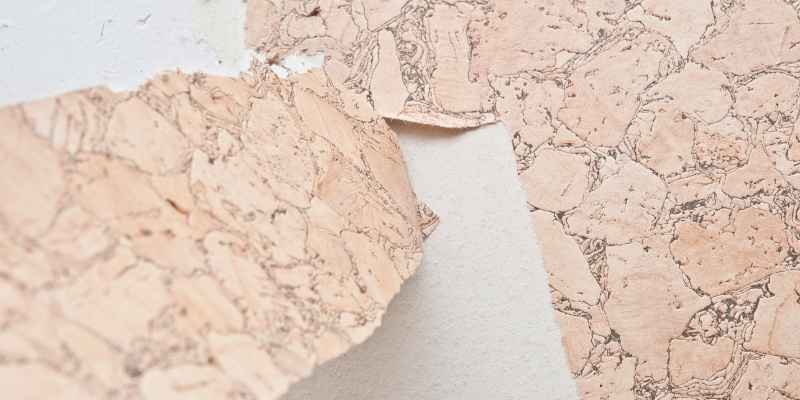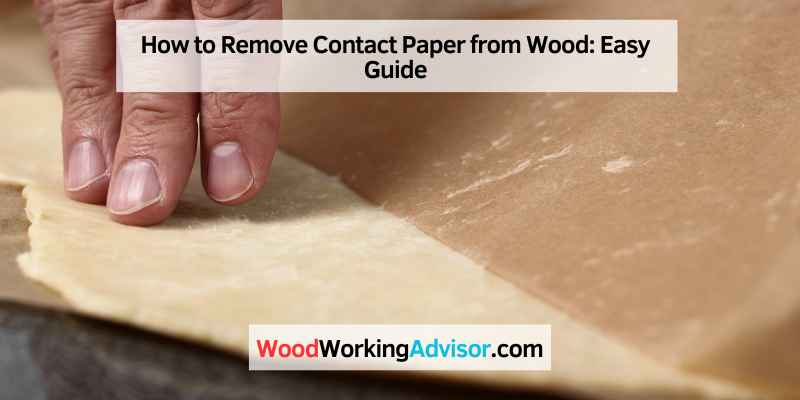To remove contact paper from wood, apply heat using a blow dryer and peel it off carefully. Removing contact paper from wood can be a simple process when using the right techniques.
Whether you want to update your furniture or change the look of your cabinets, knowing how to remove contact paper properly is essential. By following some easy steps, you can effectively eliminate contact paper residue without damaging the wood surface.
Let’s explore the best methods and tips for safely removing contact paper from wood surfaces.
Introduction To Contact Paper
To remove contact paper from wood, start by heating the paper with a hairdryer. Gently peel off the paper and residue using a putty knife. Clean the surface with warm soapy water to complete the process.
Contact paper is a versatile and affordable material that has become increasingly popular in home decor. It is a self-adhesive vinyl or paper material that can be easily applied to various surfaces, including wood. Contact paper comes in a wide range of colors, patterns, and textures, allowing you to transform the look of your furniture and other wooden items without the need for expensive renovations. In this blog post, we will explore what contact paper is, its common uses in home decor, and provide you with a step-by-step guide on how to remove contact paper from wood.
What Is Contact Paper?
Contact paper is a type of adhesive material that is typically used to cover and decorate surfaces. It is made of vinyl or paper with a self-adhesive backing, allowing it to stick to various materials, including wood. Contact paper is available in a wide range of colors, patterns, and textures, making it a versatile option for adding a personalized touch to your home decor. Whether you want to add a pop of color, mimic the look of expensive materials like marble or granite, or simply protect your furniture from scratches and stains, contact paper can help you achieve your desired aesthetic.
Common Uses In Home Decor
Contact paper offers endless possibilities for enhancing your home decor. Here are some common uses:
| 1. Furniture Makeovers | Transform outdated or worn-out furniture by covering it with contact paper. Whether it’s a dresser, table, or cabinet, contact paper can give your furniture a fresh, new look. |
| 2. Backsplashes and Countertops | Add a touch of style to your kitchen or bathroom by applying contact paper to your backsplash or countertops. You can choose a pattern that mimics the look of expensive materials for a fraction of the cost. |
| 3. Shelving and Cabinets | Revamp your shelves and cabinets with contact paper. It not only adds a decorative element but also protects the surfaces from scratches and spills. |
| 4. Wall Decals | Contact paper can be used to create custom wall decals. Cut out shapes or designs from the contact paper and stick them to your walls for a unique and temporary wall art solution. |
| 5. Crafts and DIY Projects | Contact paper is perfect for various crafts and DIY projects. From creating custom labels and stickers to covering notebooks and photo frames, the possibilities are endless. |
Now that we have explored the uses of contact paper in home decor, let’s move on to the main topic of this blog post: how to remove contact paper from wood.
Preparation Before Removal

Preparation before the removal of contact paper from wood is crucial to ensure a smooth and effective process. By taking the time to gather the necessary materials and assess the surface, you can minimize potential damage and maximize the chances of successful removal.
Materials Needed
Before starting the removal process, gather the following materials:
- Plastic putty knife
- Adhesive remover
- Microfiber cloth
- Warm, soapy water
- Hairdryer or heat gun
Assessing The Surface
Prior to removing the contact paper, assess the wood surface to determine its condition and any potential challenges. Look for any signs of damage, such as warping or discoloration, as well as any areas where the contact paper may be particularly stubbornly adhered.
Step-by-step Removal Process
When it comes to removing contact paper from wood, following a step-by-step process can make the task much easier. The Step-by-Step Removal Process involves starting from a corner, using peeling techniques, and applying heat. Here’s a detailed guide on how to effectively remove contact paper from wood.
Starting From A Corner
Begin the removal process by lifting a corner of the contact paper with your fingernail or a putty knife. Gently work the tool under the edge of the paper to loosen it from the wood surface. Be careful not to dig into the wood or cause any damage.
Peeling Techniques
Once the corner is lifted, slowly and steadily peel the contact paper off the wood surface. Pull the paper back on itself at a 180-degree angle to minimize the risk of tearing. Use smooth and even motions to avoid leaving any adhesive residue behind.
Heat Application
If the contact paper is stubborn and doesn’t peel off easily, use a hair dryer or heat gun to apply gentle heat to the surface. Warm the contact paper for a few seconds to soften the adhesive, making it easier to peel off. Be cautious not to overheat the paper or the wood underneath.
Dealing With Stubborn Residue
To remove contact paper from wood, start by heating the adhesive with a blow dryer. Gently peel off the paper using a putty knife to avoid damaging the wood surface. For stubborn residue, apply a mixture of warm water and vinegar, then wipe clean with a damp cloth.
Using Solvents
When it comes to dealing with stubborn residue left behind by contact paper on wood surfaces, using solvents can be an effective solution. Solvents are powerful substances that can dissolve the adhesive, making it easier to remove. Here are a few solvents you can try:
- Nail Polish Remover: Soak a cotton ball with nail polish remover containing acetone and gently rub it on the residue until it starts to loosen.
- Rubbing Alcohol: Dampen a cloth with rubbing alcohol and apply it to the residue, allowing it to sit for a few minutes. Then, use a plastic scraper to scrape off the softened residue.
- Goo Gone: Apply a small amount of Goo Gone to a cloth and rub it onto the residue. Let it sit for a few minutes before wiping it away with a clean cloth.
Natural Alternatives
If you prefer to avoid using chemical solvents, there are several natural alternatives that can help remove stubborn residue from contact paper on wood surfaces. These options are not only effective but also safer for both you and the environment. Here are a few natural alternatives to consider:
- Vinegar: Mix equal parts of white vinegar and warm water in a spray bottle. Spray the solution onto the residue and let it sit for a few minutes. Then, use a plastic scraper or a soft cloth to gently remove the residue.
- Vegetable Oil: Apply a small amount of vegetable oil to a cloth and rub it onto the residue. Let it sit for a few minutes to soften the residue, then wipe it away with a clean cloth.
- Baking Soda: Make a paste by mixing baking soda with water. Apply the paste to the residue and let it sit for a few minutes. Then, use a damp cloth to gently scrub off the residue.
Remember to always test any solvents or natural alternatives on a small, inconspicuous area of the wood surface before applying them to the entire residue. This will help ensure that they do not cause any damage or discoloration to the wood.
Cleaning And Caring For The Wood Post-removal
After successfully removing contact paper from wood, it’s essential to ensure proper cleaning and care to maintain the wood’s quality and appearance. The post-removal cleaning process involves wiping down the surface and polishing the wood to restore its natural luster and beauty.
Wiping Down The Surface
To start, use a damp microfiber cloth to gently wipe down the wood surface. This will help remove any remaining adhesive residue or dirt. For stubborn residue, a mixture of warm water and mild dish soap can be applied, followed by gentle scrubbing with a soft-bristled brush or sponge. Once cleaned, use a dry cloth to remove any excess moisture and allow the wood to air dry completely.
Polishing Wood
After the wood has been thoroughly cleaned and dried, apply a small amount of wood polish or wax to a clean cloth. Gently rub the polish onto the wood surface in circular motions, ensuring an even application. Allow the polish to sit for a few minutes, then use a separate cloth to buff the wood, bringing out its natural shine. Regular polishing helps protect the wood and maintain its sheen over time.
Tips To Avoid Damage

To remove contact paper from wood, start by heating the paper with a blow dryer to loosen the adhesive. Then, gently peel off the paper using a putty knife or your fingers. Any remaining residue can be removed with a mixture of warm water and dish soap.
Gentle Removal
Removing contact paper from wood requires a delicate touch.
Choosing The Right Products
Using the correct products can prevent damage to the wood surface.
Tips to Avoid Damage: When removing contact paper from wood, follow these guidelines to prevent any harm to the surface:
- Start by gently peeling off the contact paper from the corner.
- Avoid using sharp tools that can scratch the wood.
- Apply heat using a hairdryer to loosen the adhesive for easier removal.
- Use a plastic scraper to lift the paper without causing damage.
For stubborn residue, mix equal parts water and vinegar for a natural cleaning solution.
| Product | Usage |
|---|---|
| Vinegar | Mild acid to dissolve adhesive |
| Plastic Scraper | Gentle tool for lifting paper |
| Hairdryer | Applies heat to loosen adhesive |
Remember to test any product on a small, inconspicuous area of the wood first.
Alternatives To Contact Paper
Looking for alternatives to contact paper for your wood surfaces?
Removable Wallpaper
Removable wallpaper offers a variety of designs and is easy to apply and remove.
Fabric And Starch
Fabric and starch can create a unique look and are easily removable with water
Frequently Asked Questions
How Do I Remove Contact Paper From Wood Without Damaging It?
To remove contact paper from wood without damaging it, you can use a hairdryer or heat gun to soften the adhesive. Then, use a plastic scraper or credit card to gently peel off the paper. You can also use a solution of warm water and dish soap to help loosen the adhesive.
Can Vinegar Remove Contact Paper From Wood?
Yes, vinegar can help remove contact paper from wood. Mix equal parts of white vinegar and water in a spray bottle. Spray the solution onto the contact paper and let it sit for a few minutes. Then, use a plastic scraper or credit card to gently peel off the paper.
How Do I Remove Stubborn Contact Paper From Wood?
To remove stubborn contact paper from wood, you can use a solution of warm water and fabric softener. Mix equal parts of both in a spray bottle and spray onto the contact paper. Let it sit for a few minutes before using a plastic scraper or credit card to gently peel off the paper.
What Tools Do I Need To Remove Contact Paper From Wood?
To remove contact paper from wood, you will need a hairdryer or heat gun, a plastic scraper or credit card, warm water, dish soap, and fabric softener. You may also need a sponge or cloth to apply the warm water and dish soap solution.
Conclusion
Removing contact paper from wood can be a daunting task, but with the right tools and techniques, it’s possible to do it successfully. Whether you use a heat gun, a scraper, or a chemical adhesive remover, it’s important to take your time and be patient throughout the process.
By following these tips and tricks, you can remove contact paper from wood without damaging the underlying surface and restore your furniture to its former glory. Remember to always test any method in a small, inconspicuous area before attempting it on a larger scale.


